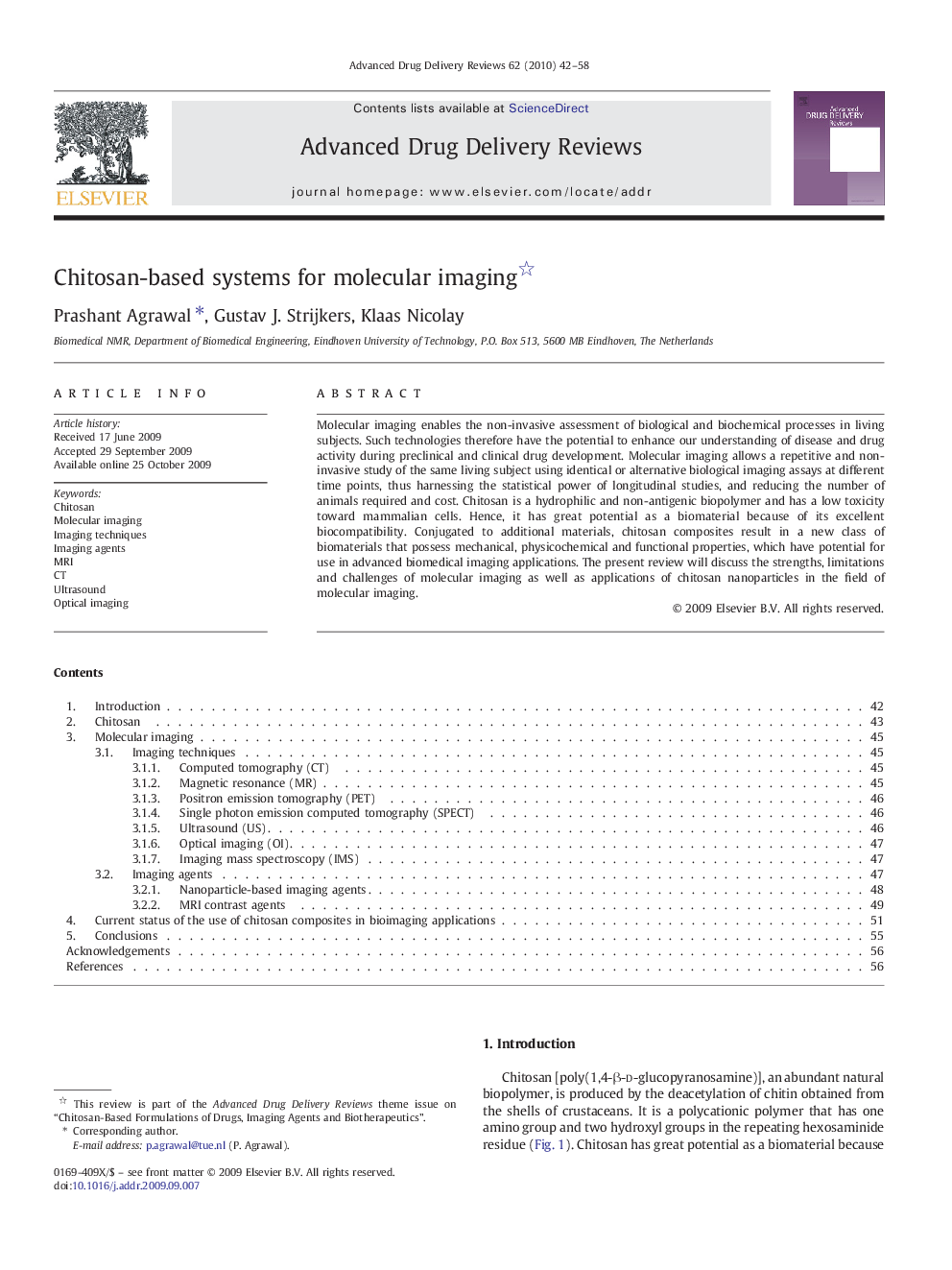| Article ID | Journal | Published Year | Pages | File Type |
|---|---|---|---|---|
| 2071468 | Advanced Drug Delivery Reviews | 2010 | 17 Pages |
Molecular imaging enables the non-invasive assessment of biological and biochemical processes in living subjects. Such technologies therefore have the potential to enhance our understanding of disease and drug activity during preclinical and clinical drug development. Molecular imaging allows a repetitive and non-invasive study of the same living subject using identical or alternative biological imaging assays at different time points, thus harnessing the statistical power of longitudinal studies, and reducing the number of animals required and cost. Chitosan is a hydrophilic and non-antigenic biopolymer and has a low toxicity toward mammalian cells. Hence, it has great potential as a biomaterial because of its excellent biocompatibility. Conjugated to additional materials, chitosan composites result in a new class of biomaterials that possess mechanical, physicochemical and functional properties, which have potential for use in advanced biomedical imaging applications. The present review will discuss the strengths, limitations and challenges of molecular imaging as well as applications of chitosan nanoparticles in the field of molecular imaging.
